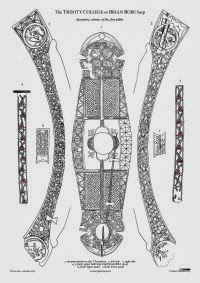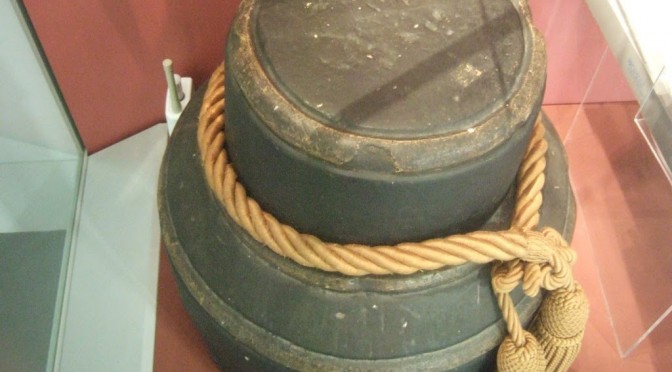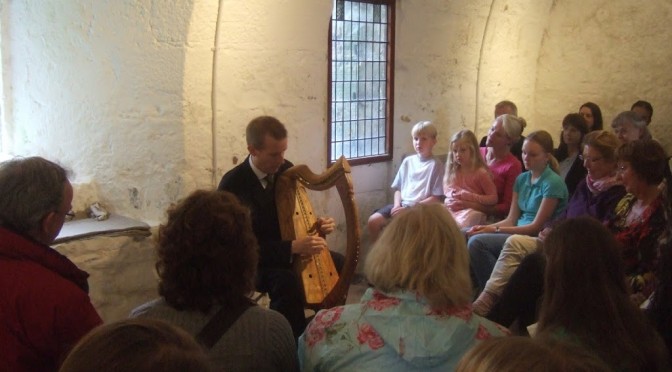A sneak preview for readers of my blog!
I have made a drawing of the forepillar decoration on the Trinity College harp. This has never been done before; when R.B. Armstrong studied the harp for his 1904 book, he did not draw the pillar decoration, saying it was probably later work. And no-one has done a good published study of the harp since then.
I have been admiring the pillar decoration on my vists to Dublin for a few years now, and I managed to get enough closeup photos to be able to work out almost all of the decoration. I have drawn it all out schematically, following the general principle of Armstrong’s superb diagram of the decoration of the Queen Mary harp forepillar.
I very much enjoyed doing this work; the decoration is really complex and busy and it was a real challenge to trace the twists and turns of each vine stalk and interlace strap.
I’m publishing the drawing officially on 1st October, both as a free PDF download that you can get from the Trinity pillar decoration webpage and also as a 2-colour A3 sized digital print on good art paper that you can order from the Emporium prints page.
Be sure to read the rest of the Trinity pages as I have added some other interesting information and illustrations.











